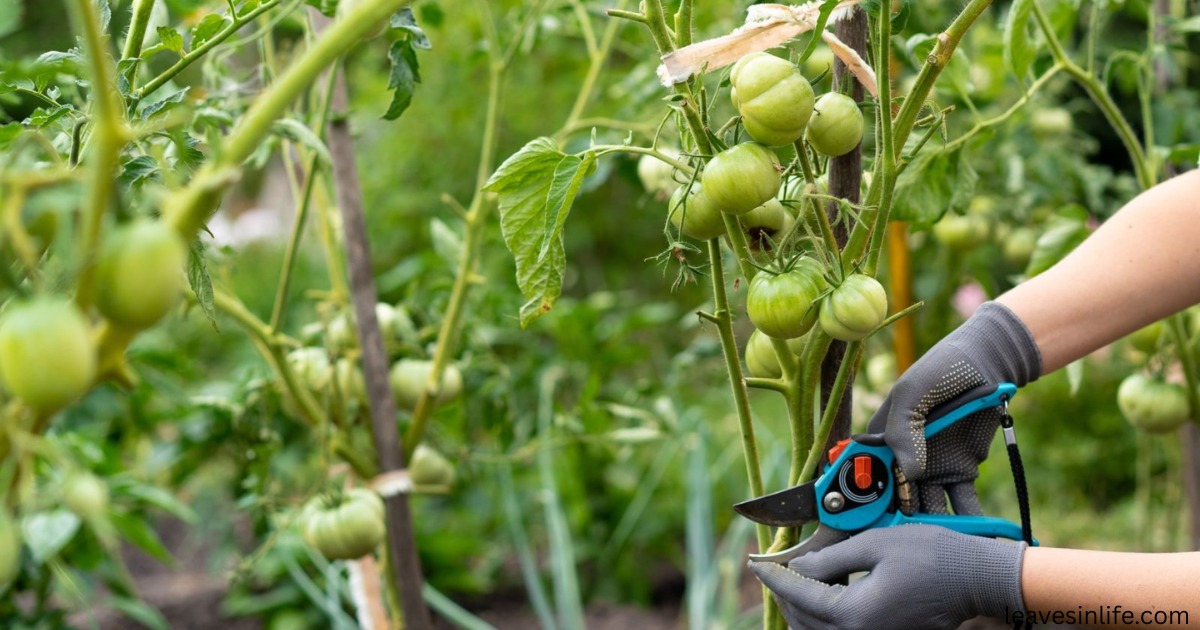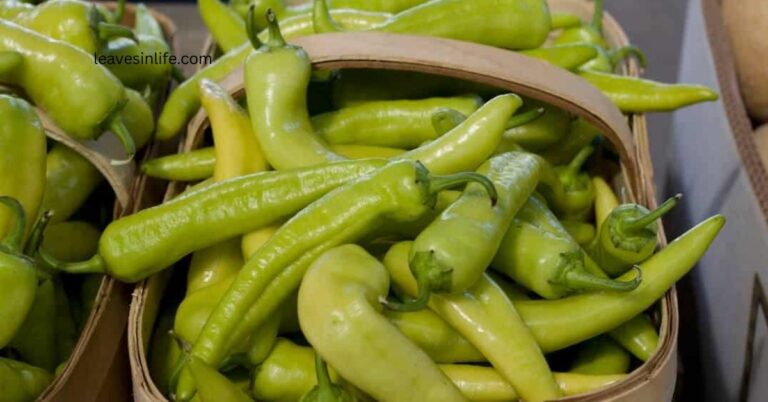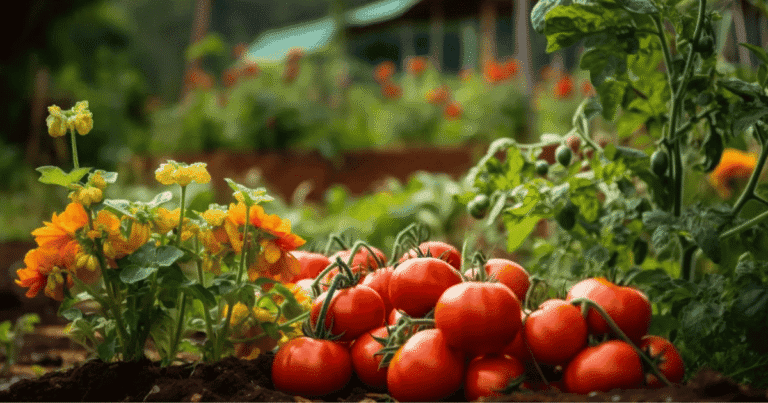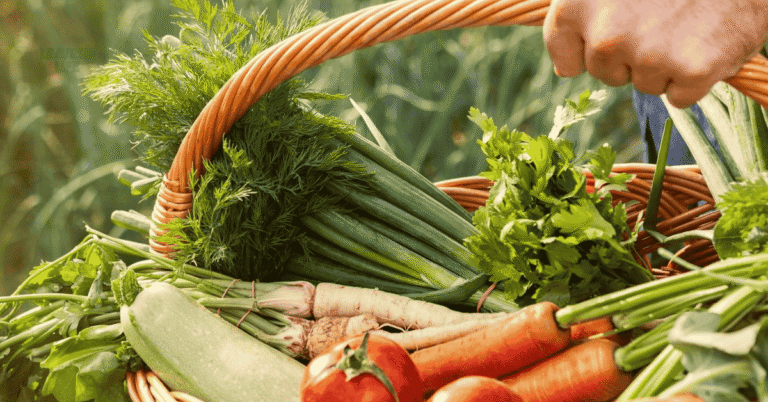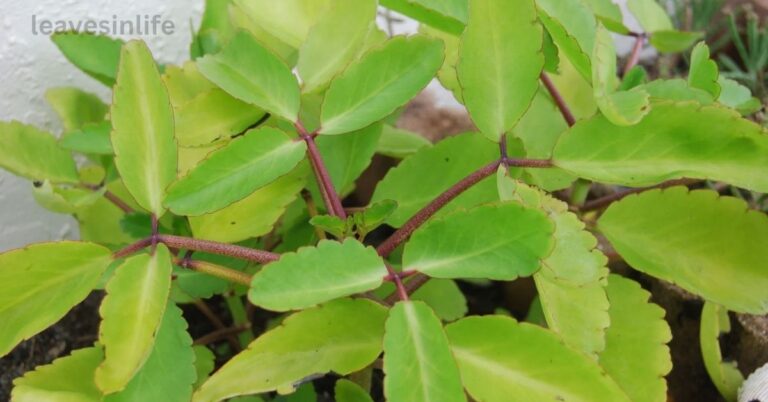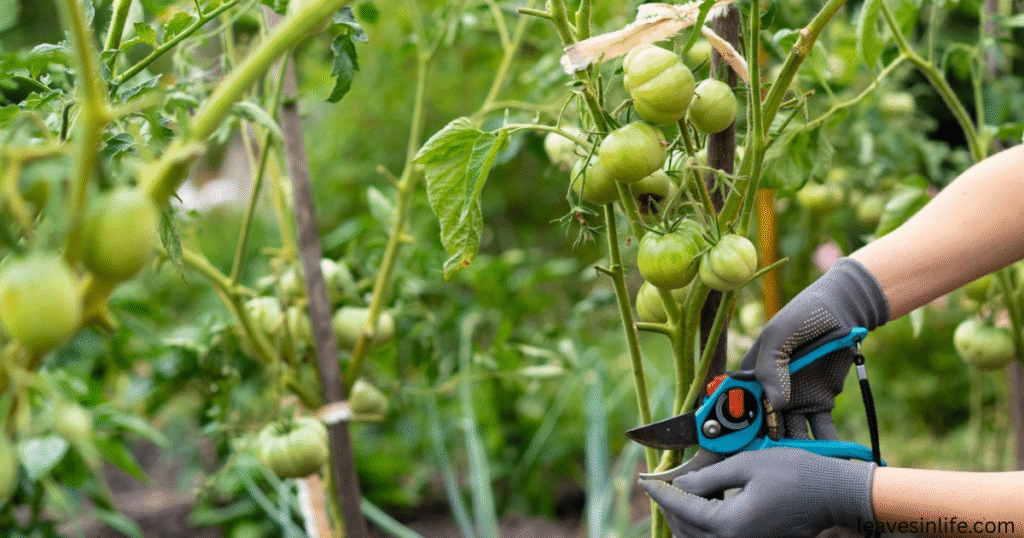
It is necessary for you to know when and how to prune tomato plants If you have planted them somewhere in your home or garden. Pruning makes plants grow healthier and is incredibly impactful but it needs to be done correctly and at the right time. I am going to make your concepts of tomato plant pruning crystal clear as many ideas are always confused by pruning.In this article you will find pruning, its types, basic requirements, time to prune tomato plants and a simple guide for how to prune tomato plants. So, lets get started:
What is pruning?
Pruning is simply the deliberate removal of tree branches and limbs to either achieve a specific objective or altering a tree’s health and form.Cut lower branches or stems if you want to see upward growth, and cut branch and stem tips if you want to see horizontal growth that will result in fuller plant growth.Thinning Pruning, Heading Back Pruning, Renewal Pruning, Rejuvenation Pruning, Deadheading and Fruit Tree Pruning are types of pruning each with its own procedure and aims.
Why pruning Tomato plants is important?
Pruning is crucial as it keeps plants healthy, productive, and attractive. following are some benefits you witness by pruning tomato plants. before coming to describe you how to prune tomato plants, i’ll want you to know the importance of this legacy.
- Better Airflow – Removing extra leaves and side shoots (suckers) allows air to move freely, reducing the risk of fungal diseases like blight.
- More Sunlight – Pruned plants let sunlight reach the inner leaves and fruits, helping them ripen faster and more evenly
- Stronger Plant – The plant doesn’t waste energy on useless leaves or branches, and instead focuses on producing bigger, healthier fruits..
- Prevents Overcrowding – Tomato plants can become bushy. Pruning keeps them neat, making it easier to water, fertilize, and harvest.
- Higher Yield – By guiding the plant’s energy into fewer but stronger fruiting branches, you usually get better quality tomatoes.
Pruning Tools for Tomato plants pruning
To prune tomato plants safely and effectively, you don’t need too many pruning tools, just the right ones are enough. If you keep in mind the right tools, the correct timing, and avoid common mistakes, you will always know exactly how to prune tomato plants for the best results in your garden. Here’s a list of useful equipment:
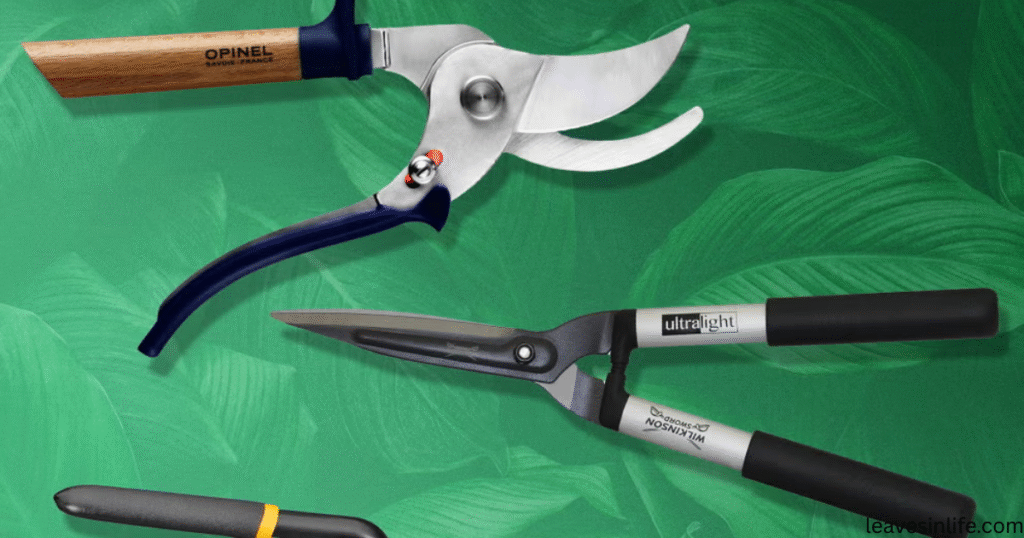
- Sharp Scissors or Garden Shears – Good for trimming leaves or small shoots.
- Garden Gloves – Protect your hands from cuts, thorns (if nearby), or sticky tomato sap.
- Disinfectant / Rubbing Alcohol – To clean your tools before and after pruning, preventing the spread of plant diseases.
- Hand Pruners (Secateurs) – For cutting thicker stems and branches cleanly.
- Bucket or Bag – To collect and dispose of removed leaves and stems.
- If you have many tomato plants, a small pruning saw might help for larger stems, but usually hand pruners are enough.
When to prune tomato plants
If i say it to the point then, Prune tomatoes regularly during the growing season (spring–summer), starting once the plant is well-established. Morning is the best time of day. The best time to prune tomato plants depends on their growth stage, not just the season:
- After the plant is established : Start pruning once the tomato plant is about 12–18 inches tall and has at least 2–3 sets of true leaves. This ensures the plant is strong enough to handle pruning.
- During active growing season : For most regions, this means spring to summer, when tomatoes are actively producing stems, leaves, and flowers.
- Morning time of the day : Prune in the morning so the cuts dry quickly in sunlight, reducing the risk of disease.
- Throughout the season : Keep removing suckers (side shoots) and lower yellowing leaves regularly, but avoid heavy pruning all at once.
- Stop heavy pruning late in the season : Toward the end (about a month before expected frost or end of harvest), pruning should be minimal, so the plant can focus on ripening the remaining fruits.
How to prune tomato plants
The next question is How to prune tomato plants? Follow these steps and you will learn how to plant tomato plants,
Confirm the tomato variety:
Pruning is not for every type of tomato plant. you don’t have to prune determinate tomatoes because doing so will actually reduce your yields.
- Determinate tomatoes (also called bush types) grow to a set height, produce fruit all at once, and stay fairly compact. They don’t need pruning except for removing dead or diseased leaves.
- Indeterminate tomatoes (vine types), on the other hand, keep growing and producing fruit throughout the season. Pruning them helps improve airflow, manage size, and encourage bigger harvests.
- Indeterminate varieties: Beefsteak, Big Boy, Brandywine, Sungold, Sweet Million, Cherokee Purple, and most cherry or heirloom tomatoes.
- Determinate varieties: Roma, Rutgers, Early Girl, Patio, Zebra Cherry, Celebrity, San Marzano Nano, Amish Paste, Marglobe, Amelia, Better Bush, Heinz Classic, and Mountain Pride.
Remove Lower Tomato Suckers:
it’s about knowing how to prune tomato plants properly without stressing them .”Suckers” are small shoots that grow in the space between the main stem and a side branch, usually at a 45° angle. If left to grow, they take up energy that could otherwise go toward fruit production.
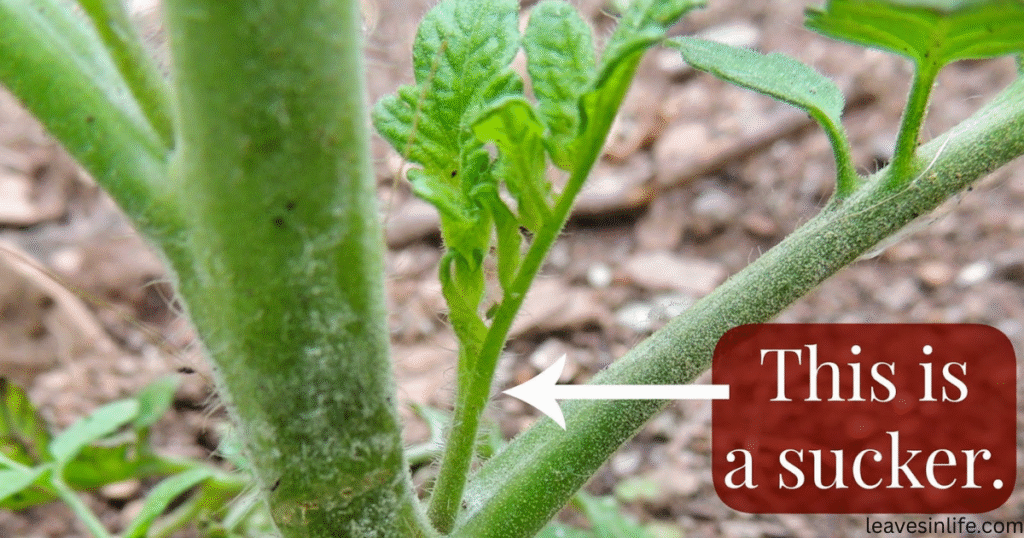
- When to remove: If a sucker is less than 2 inches long, simply pinch it off with your fingers. For larger ones, use clean, sanitized garden shears to cut it close to the stem.
- Why remove them: Cutting off suckers below the first flower cluster ensures the plant channels its nutrients into making strong, healthy fruits instead of unnecessary growth.
- Timing matters: It’s easier and healthier for the plant if you remove suckers while they’re still small. Once they’re thicker than a pencil, removing them leaves a larger wound.
- Special case – warm climates: In hotter regions, you can try the “Missouri pruning” method. This involves pinching off just the tips of the suckers but leaving the bottom two leaflets. These remaining leaves provide shade to the fruit and help protect it from sunscald.
Leave a Few Suckers for Higher Yields (Optional):
When learning how to prune tomato plants, it’s important to know that not all suckers need to be removed. If you have enough space and a strong support system, you can let a few suckers higher up on the plant grow into secondary stems. These extra stems can increase fruit production and overall yield.
- How many to keep: Most gardeners keep 1–2 strong suckers near the top, but you can allow up to 4. Leaving more than this usually results in smaller fruits.
- How to manage them: Any sucker you keep should be treated like a second main stem—prune its own suckers regularly and support it with a stake, cage, or trellis.
Trim Lower Leaves to Prevent Disease:
One of the most important steps in learning how to prune tomato plants is removing the lower leaves that touch the soil. These leaves are highly prone to blight and soil-borne diseases, which can spread upward when water splashes from the ground onto the plant.
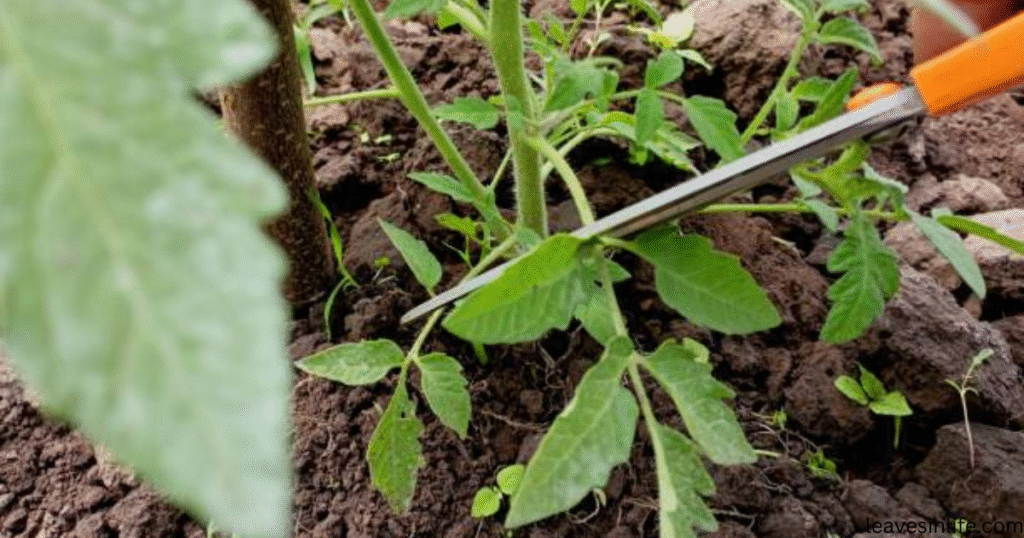
- How much to remove: Trim the bottom 6–12 inches of leaves. To do this, bend each leaf upward and then downward until it snaps off. If it doesn’t snap, use clean pruning shears or a sharp knife to cut it close to the stem.
- Warm climates: In hotter regions, you may leave a few lower leaves to shade the soil and protect fruits from sunscald. Still, always remove yellowing or damaged leaves that touch the ground.
- Humid environments: If your tomatoes grow in a greenhouse or a humid climate, remove all leaves below the first flower cluster. This improves air circulation, reduces humidity buildup, and helps wounds from pruning heal faster, lowering the risk of disease.
Top Before Frost for Faster Ripening
About 30 days before the first expected frost, it’s best to “top” your tomato plants. This means removing the growing tips from each main stem so the plant stops producing new flowers and focuses its energy on ripening the fruits already on the vine.
- How to prune tomato plants: Use clean, sharp gardening shears and cut the stem just above a flower cluster.
- Why it helps: By redirecting energy away from new growth, topping ensures your remaining tomatoes grow larger and ripen more quickly before the season ends.
Go Easy Late in the Season
It’s never too late to prune tomato plants, but timing matters. Light pruning ,such as removing small suckers near the base or trimming off yellow and diseased leaves can be done at any stage If you know How to prune tomato plants the right way.
However, avoid heavy pruning late in the season, especially if your plant is already fully grown and carrying lots of fruit. Cutting back too much at this stage can stress the plant and reduce your final harvest. Focus on gentle maintenance instead of major cuts.
Mistakes to Avoid When Pruning Tomato Plants
Even if you know how to prune tomato plants, simple mistakes can harm growth and reduce your harvest. Here are the most common ones to watch out for:
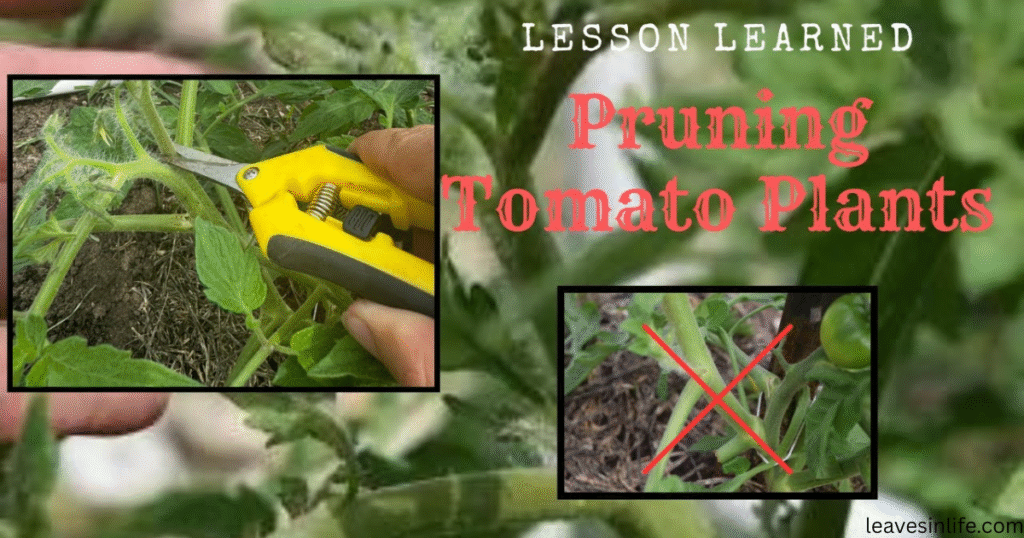
- Leaving Large Suckers Too Long – Once suckers grow thicker than a pencil, removing them creates large wounds that slow healing and make the plant vulnerable.
- Pruning Determinate Varieties – Never heavily prune determinate (bush) tomatoes. They only produce a set amount of fruit, and removing suckers will lower your yield.
- Over-Pruning – Cutting off too many leaves reduces photosynthesis and can expose fruits to sunscald. Always leave enough foliage for shade and energy production.
- Pruning Too Late in the Season – Heavy pruning when plants are mature and full of fruit can stress them and hurt your harvest. Stick to light maintenance at that stage.
- Ignoring Tool Hygiene – Using dirty scissors or pruners spreads diseases. Always disinfect your tools before and after pruning.
- Cutting in Wet Conditions – Pruning during rainy or humid weather increases the chance of fungal infections. The best time is on a dry morning.
Conclusion
Knowing how to prune tomato plants is less about strict rules and more about understanding what your plants need to stay healthy. A little trimming at the right time keeps air flowing, reduces disease, and helps your tomatoes put energy into ripening delicious fruit.You can plant tomato seeds and get get high yield tomatoes If you focus on the basics removing suckers, trimming lower leaves, and avoiding over-pruning, you’ll quickly see the difference in growth and harvest. In the end, I assure once you learn how to prune tomato plants with care and consistency, your garden will reward you with stronger plants and a bigger, tastier crop.

